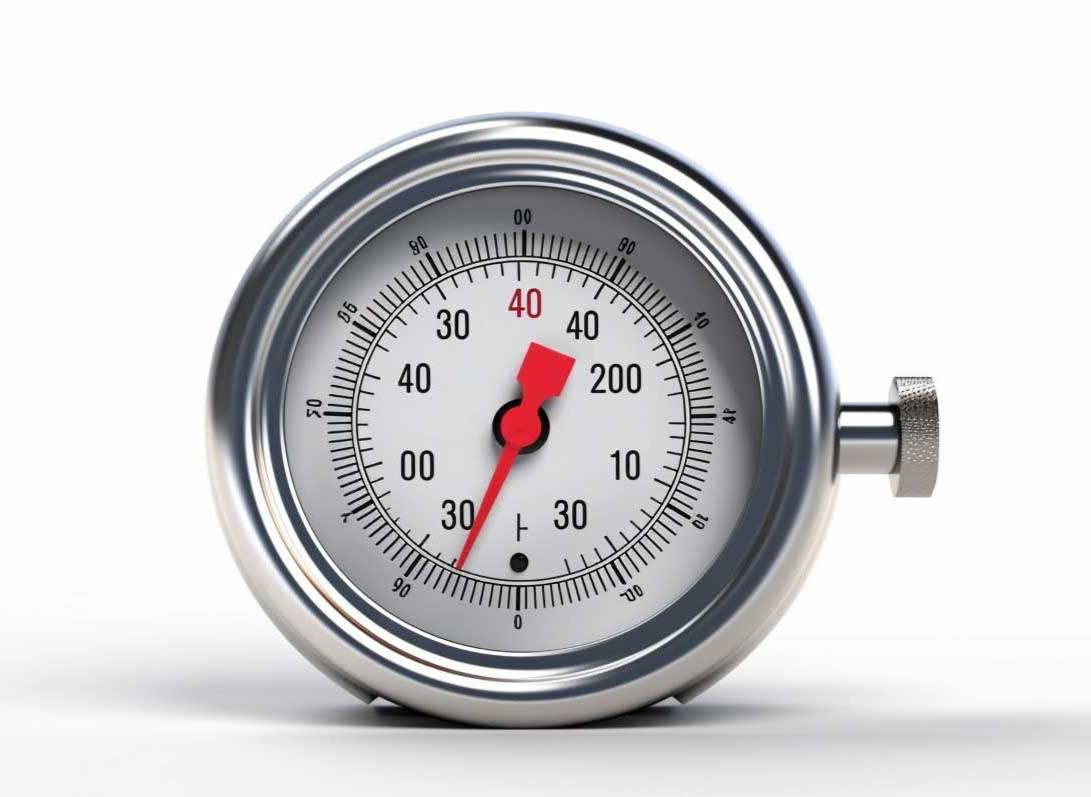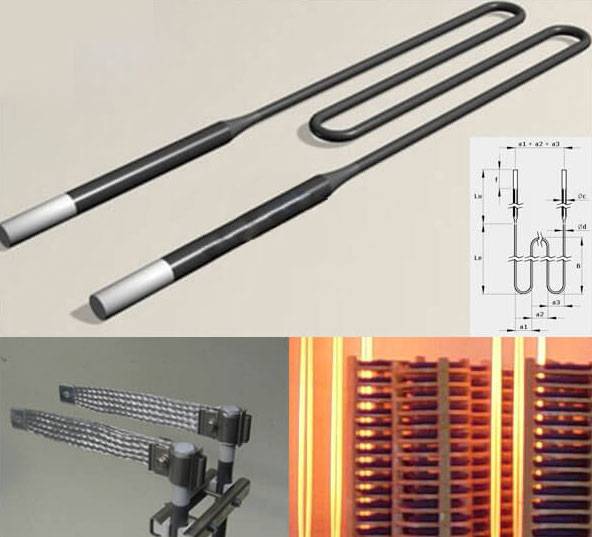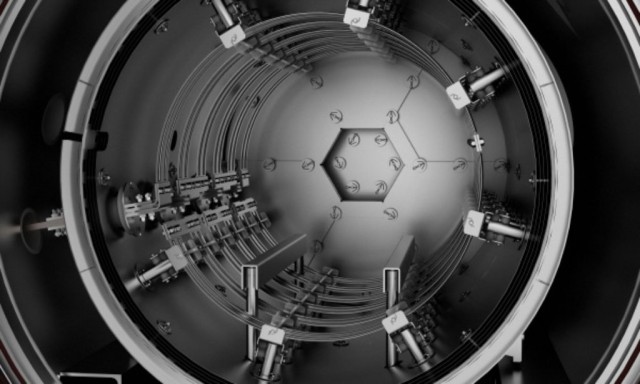Introduction to Sintering Methods and Vacuum Hot Press Sintering
Common Sintering Techniques
Sintering techniques are crucial for transforming powder compacts into dense, strong components. The most common methods include pressureless sintering and pressurized sintering, each offering unique advantages depending on the desired outcome.
Pressureless Sintering involves heating the powder compact to the required temperature without applying external pressure. This technique is often used in conventional sintering, where box or tube furnaces are employed under controlled atmospheres to ensure safety and proper bonding. High-temperature sintering, a variant of pressureless sintering, elevates the temperature further to reduce surface oxidation, enhancing mechanical properties, reducing porosity, and strengthening the metal. However, parts sintered at high temperatures tend to experience more shrinkage.
Pressurized Sintering methods, on the other hand, apply external pressure during the sintering process to achieve higher densification rates and better mechanical properties. This category includes:
- Hot Isostatic Pressure (HIP) Sintering: Involves applying isostatic pressure in all directions simultaneously, often in a gas medium, to achieve uniform densification.
- Hot Pressure Sintering: Uses a combination of heat and uniaxial pressure to promote rapid densification and control microstructure.
- Air Pressure Sintering: Applies pressure in an air-filled environment, which can be particularly effective for certain materials that benefit from the presence of oxygen or other gases.
Each of these methods has its own set of advantages and is suited to specific types of materials and applications, making them essential tools in the arsenal of material processing techniques.
Advantages of Vacuum Hot Press Sintering
Vacuum hot press sintering offers a myriad of advantages that make it a preferred method in various industries. One of the most compelling reasons for its adoption is the significant reduction in costs associated with the development and operation of these furnaces. By optimizing energy consumption and minimizing material waste, vacuum hot press sintering demonstrates superior cost-effectiveness compared to traditional sintering methods.
Moreover, the vacuum environment in which the sintering process occurs plays a crucial role in enhancing the quality of the final product. The absence of atmospheric gases prevents oxidation and contamination, ensuring that the materials maintain their intended properties. This controlled environment also allows for better process management, enabling precise adjustments to temperature and pressure parameters.
The sintering process under vacuum conditions facilitates atomic diffusion, leading to the formation of a high-density solid product. This densification process significantly improves the mechanical, electronic, and thermal properties of the materials. For instance, the hardness and density of metals and ceramics can be markedly enhanced, making them more suitable for high-stress and high-temperature applications.
| Advantage | Description |
|---|---|
| Cost-Effectiveness | Reduces operational costs through energy efficiency and material optimization. |
| Quality Control | Prevents oxidation and contamination, ensuring high-quality final products. |
| Densification | Promotes atomic diffusion, resulting in high-density, high-strength materials. |
| Versatility | Suitable for a wide range of materials, including metals, ceramics, and composites. |
In summary, the adoption of vacuum hot press sintering not only lowers operational costs but also significantly enhances the physical and mechanical properties of the final product, making it a superior choice in material processing.

Process Characteristics of Hot Press Sintering
Densification Mechanisms
The densification process in vacuum hot press sintering involves several key mechanisms that collectively contribute to the consolidation of materials. These mechanisms include plastic flow, viscous flow, diffusion, and creep, each playing a crucial role in achieving rapid densification and precise microstructure control.
Plastic Flow and Viscous Flow
Plastic flow and viscous flow are fundamental to the densification process. Plastic flow occurs when materials undergo deformation under stress, allowing particles to rearrange and fill voids. Viscous flow, on the other hand, involves the movement of particles due to shear forces, which aids in the redistribution of mass and the elimination of pores.
Diffusion and Creep
Diffusion and creep are also critical mechanisms. Diffusion involves the movement of atoms from areas of high concentration to areas of low concentration, which helps in the filling of inter-particle spaces. Creep, a time-dependent deformation under stress, facilitates the gradual closing of pores and the overall densification of the material.
Additional Densification Processes
Beyond the primary mechanisms, additional processes such as rearrangement, solution-precipitation, and Ostwald ripening further enhance densification. Rearrangement occurs as the liquid melts, with capillary action pulling the liquid into pores and causing grains to rearrange into a more favorable packing arrangement. Solution-precipitation involves atoms preferentially going into solution in areas of high capillary pressure and then precipitating in areas of lower chemical potential, leading to contact flattening and densification. Ostwald ripening, where smaller particles dissolve and precipitate on larger particles, also contributes to densification by optimizing particle size distribution.
These mechanisms and processes collectively ensure that vacuum hot press sintering achieves high levels of densification and microstructure control, making it a superior method for material consolidation.
Temperature and Vacuum Effects
Vacuum hot press sintering introduces a controlled environment that significantly lowers the required sintering temperature compared to conventional methods. This reduction in temperature is pivotal as it minimizes thermal degradation of the material, thereby preserving its mechanical properties. The vacuum environment plays a crucial role in efficiently eliminating pores within the material, a process that is accelerated by the absence of atmospheric gases.
The elimination of pores is not merely a cosmetic improvement; it directly impacts the densification process. As pores are removed, the material becomes more compact, enhancing its overall density and structural integrity. This densification process is further supported by the stabilization of grain structures, which prevents the formation of new pores and ensures a uniform microstructure.
To illustrate the impact of vacuum conditions on sintering, consider the following table:
| Aspect | Conventional Sintering | Vacuum Hot Press Sintering |
|---|---|---|
| Sintering Temperature | Higher | Lower |
| Pore Elimination | Less Efficient | More Efficient |
| Densification | Slower | Faster |
| Grain Stability | Less Stable | More Stable |
The table highlights that vacuum hot press sintering not only achieves a higher degree of densification but also ensures greater stability in the material's grain structure. This dual benefit makes it an ideal choice for applications where material strength and durability are paramount.

Classification of Vacuum Hot Press Sintering Furnaces
By Environmental Use
The classification of hot press sintering furnaces is primarily based on the environmental conditions under which they operate. This categorization is crucial for understanding the specific applications and advantages of each type of furnace.
-
Atmospheric Hot Press Sintering: This type of furnace operates under normal atmospheric conditions. It is particularly useful for materials that do not require a controlled environment for sintering. The simplicity of this setup makes it cost-effective and suitable for a wide range of applications.
-
Atmosphere-Protected Hot Press Sintering: In contrast to atmospheric furnaces, these furnaces operate within a controlled atmosphere, which can be inert, reducing, or oxidizing, depending on the material being processed. This controlled environment is essential for preventing unwanted reactions and ensuring the desired material properties.
-
Vacuum Hot Press Sintering: This is the most advanced category, operating under a vacuum to eliminate any atmospheric interactions. The vacuum environment significantly reduces the sintering temperature and efficiently removes pores, leading to enhanced densification and grain stability. This method is particularly advantageous for high-performance materials where purity and precise microstructure control are critical.
| Type of Furnace | Environmental Condition | Key Advantages |
|---|---|---|
| Atmospheric | Normal atmospheric | Cost-effective, wide applicability |
| Atmosphere-Protected | Controlled atmosphere | Prevents unwanted reactions, precise material properties |
| Vacuum | Vacuum environment | Reduced sintering temperature, enhanced densification, precise microstructure control |
Understanding these environmental classifications helps in selecting the most appropriate furnace for specific material processing needs, ensuring optimal performance and quality.
By Temperature Range
Vacuum hot press sintering furnaces are categorized based on their operating temperature ranges, each tailored to specific material processing needs. These ranges are typically divided into three main groups: those operating below 800°C, those operating between 1000°C and 1600°C, and those operating above 1600°C.
For furnaces operating below 800°C, heating elements such as silicon carbide (SiC) rods or molybdenum disilicide (MoSi₂) heaters are commonly used. These elements provide efficient heat transfer at lower temperatures, ensuring that the materials being processed achieve the required thermal conditions without unnecessary energy consumption.
In the mid-temperature range, between 1000°C and 1600°C, more robust heating elements like tungsten (W) or molybdenum (Mo) are employed. These materials can withstand higher temperatures and provide consistent heating, crucial for processes involving materials that require precise temperature control for optimal densification and microstructure development.
For operations above 1600°C, ultra-high temperature heating elements such as tantalum (Ta) or rhenium (Re) are utilized. These elements are selected for their ability to maintain stability and efficiency at extreme temperatures, enabling the processing of advanced materials that require such conditions for sintering.
Each temperature range also necessitates specific insulation materials to ensure energy efficiency and protect the furnace structure. For instance, below 800°C, lightweight ceramic fibers or refractory bricks are used, while above 1600°C, more advanced insulation materials like zirconia (ZrO₂) or hafnium carbide (HfC) are employed to withstand the intense heat.
This classification by temperature range not only helps in selecting the appropriate furnace for specific material processing needs but also ensures that the heating and insulation systems are optimized for the required thermal conditions, enhancing both process efficiency and product quality.
Components of Vacuum Hot Press Sintering Furnaces
Furnace Body and Door
The furnace body and door are critical components in the design of a vacuum hot press sintering furnace, particularly for high-pressure applications. These elements must be constructed with materials that ensure both structural integrity and thermal efficiency.
Materials and Structural Integrity
The materials used for the furnace body and door are typically high-grade alloys that can withstand extreme temperatures and pressures. Common materials include:
- Inconel: Known for its high strength and resistance to corrosion and oxidation at elevated temperatures.
- Hastelloy: Offers excellent resistance to a wide range of corrosive environments, making it ideal for high-pressure applications.
- Stainless Steel: Provides a balance of strength and corrosion resistance, often used in combination with other alloys for enhanced durability.
Design Considerations
The design of the furnace body and door must account for several key factors to ensure optimal performance:
- Sealing Mechanisms: Effective sealing is crucial to maintain the vacuum environment within the furnace. Gaskets made from materials like silicone or ceramic fiber are commonly used to prevent leaks.
- Thermal Expansion: The design must accommodate thermal expansion without compromising structural integrity. This often involves the use of expansion joints and flexible connections.
- Load Distribution: The door and body must evenly distribute the applied pressure to avoid localized stress and potential failure. This is achieved through careful engineering of the contact surfaces and support structures.
High-Pressure Applications
For high-pressure applications, the furnace body and door must undergo rigorous testing to ensure they can withstand the mechanical stresses involved. This includes:
- Hydraulic Testing: Simulating the high-pressure conditions the furnace will experience during operation to verify the integrity of the materials and design.
- Thermal Cycling: Subjecting the components to repeated cycles of heating and cooling to assess their durability and resistance to thermal shock.
By meeting these stringent requirements, the furnace body and door play a pivotal role in the successful operation of a vacuum hot press sintering furnace, ensuring both the safety and efficiency of the sintering process.
Insulation and Heating Systems
The insulation and heating systems of a vacuum hot press sintering furnace are meticulously designed to maintain high temperatures and protect the furnace structure. These systems are crucial for ensuring the efficient densification of materials and the stability of the sintering process.
Insulation Layers
The insulation layers are composed of high-temperature resistant materials such as ceramic fibers and refractory bricks. These materials are selected for their excellent thermal insulation properties, which help in minimizing heat loss and maintaining a stable internal temperature. The insulation layers are typically arranged in multiple layers to create a thermal barrier that reduces the need for continuous energy input, thereby enhancing energy efficiency.
Reflective Layers
In addition to insulation layers, reflective layers are incorporated to further optimize heat retention. These layers are made from materials with high reflectivity, such as aluminum foil or specialized reflective coatings. By reflecting the heat back into the furnace chamber, these layers help in maintaining the high temperatures required for sintering without the need for excessive heating. This not only conserves energy but also prolongs the lifespan of the heating elements.
Heating Elements
The heating elements are the core components responsible for generating the necessary heat within the furnace. Common types of heating elements include molybdenum disilicide (MoSi2) and tungsten, which are chosen for their ability to withstand high temperatures and provide uniform heat distribution. These elements are strategically placed to ensure that the entire furnace chamber reaches and maintains the required sintering temperature. The design and placement of these elements are critical for achieving consistent and high-quality sintering results.

By combining these advanced insulation layers, reflective layers, and efficient heating elements, vacuum hot press sintering furnaces are able to operate at optimal temperatures, ensuring the successful densification of materials and the integrity of the furnace structure.
Pressure and Control Systems
The hydraulic pressure system is a critical component of the vacuum hot press sintering furnace, responsible for applying and maintaining precise pressure during the sintering process. This system typically involves the use of hydraulic cylinders, which are designed to move with high precision to ensure uniform pressure distribution across the material being sintered. The movement of these cylinders is controlled by sophisticated mechanisms that monitor and adjust the pressure in real-time, ensuring that the desired pressure levels are consistently maintained.
To achieve this level of precision, the control systems integrate advanced sensors and automated feedback loops. These sensors continuously measure the applied pressure and provide data to the control unit, which then adjusts the hydraulic flow accordingly. This closed-loop control system not only enhances the accuracy of pressure application but also ensures that the sintering process remains stable and consistent, thereby improving the overall quality of the final product.
In addition to pressure control, the system also manages the timing and sequence of cylinder movements. This is crucial for optimizing the densification process, as different materials may require varying pressure profiles and hold times. By carefully coordinating these elements, the pressure and control systems ensure that each sintering cycle is tailored to the specific needs of the material being processed, further contributing to the quality and consistency of the end product.
Related Products
- Vacuum Hot Press Furnace Machine Heated Vacuum Press
- Vacuum Hot Press Furnace Heated Vacuum Press Machine Tube Furnace
- Vacuum Heat Treat and Pressure Sintering Furnace for High Temperature Applications
- 600T Vacuum Induction Hot Press Furnace for Heat Treat and Sintering
- Vacuum Heat Treat and Sintering Furnace with 9MPa Air Pressure
Related Articles
- Vacuum Hot Press Furnace: A Comprehensive Guide
- The Ultimate Guide to Vacuum Pressure Sintering Furnace: Benefits, Applications, and Working Principle
- Maximizing Efficiency and Precision with Vacuum Graphite Furnaces
- Vacuum Melting Furnace: A Comprehensive Guide to Vacuum Induction Melting
- Molybdenum Vacuum Furnace: High-Temperature Sintering and Heat Treatment



























